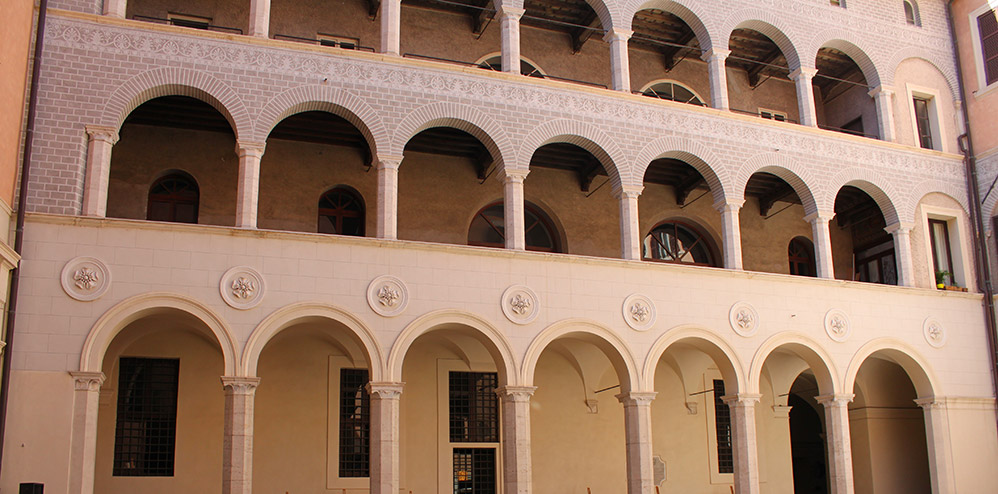The Last Restoration
As is well known, graffito is a technique used decorate walls and was used extensively in Italy between the XVI and XVII centuries to enrich the façades and courtyards of buildings with chiaroscurodecorations. This technique was often preferred to others used in that period mainly because the material used was more resistant to atmospheric changes than the one used in other wall painting techniques.

Graffito is obtained overlapping two or more layers of plaster of various colors, depending on the desired effect: monochromatic, bi-chromatic or pluri-chromatic. The graffito on the walls of the courtyard of Palazzo Sforza Cesarini is bi-chromatic with dark tones in the lower parts and light ones for the decorations in relief.
The graffiti in the Palace date back to the end of the XV and the early XVI centuries. The decorations run along the entire length of the two wall: on the south side they are present in the II order while on the south-east side they are present both on the II and III order. Prior to the restoration, the graffiti were not well preserved nor very visible hence their original decorative and ornamental function had been lost.
The restoration of the graffiti on the walls of the internal courtyard of Palazzo Sforza Cesarini was conducted with a twofold purpose. The first one, to restore and conserve the plaster (both the original ones and the ones already redone) but this did not reconfigure the graffiti’s original decorative design; the decoration was neither legible nor homogenous and this was very noticeable, specially, in the newer areas which appeared like large dark patches colored in red and grey. Hence the need to proceed with a more esthetical restoration that could reinstate the graffiti’s original decorative and embellishing function.
In fact, notwithstanding the loss of most of the original graffiti, it was possible to re-propose the decoration since it presented repetitive and modular designs that were easy to reproduce and replicate. At the same time, the restoration tried to make the areas of the original graffiti, restored with that technique, visible and recognizable versus those areas that were simply restored aiming to reinstate the decoration.
The decoration with fake ashlars that was re-proposed in the I order of the south and south-east wall, probably dates back to the restoration and rebuilding of the internal courtyard of Palazzo Sforza Cesarini directed by the architect Pio Piacentini at the end of the XIX century. Considering the geometric and repetitive design, it was possible to accurately replicate the decoration also through some traces present on the walls and a careful observation of the photograph of the restoration done by architect Piacentini (included in the yearbook of architecture in the library of Palazzo Venezia in Rome).
Extract from the Catalogue Palazzo Sforza Cesarini, De Luca Editori D’Arte, Chapter: Palazzo Sforza Cesarini in Rome by Raffaella di Marsciano.
Address
Corso Vittorio Emanuele II, 284, Roma
Telephone
+39 06 6879939
info@palazzosforzacesarini.it
